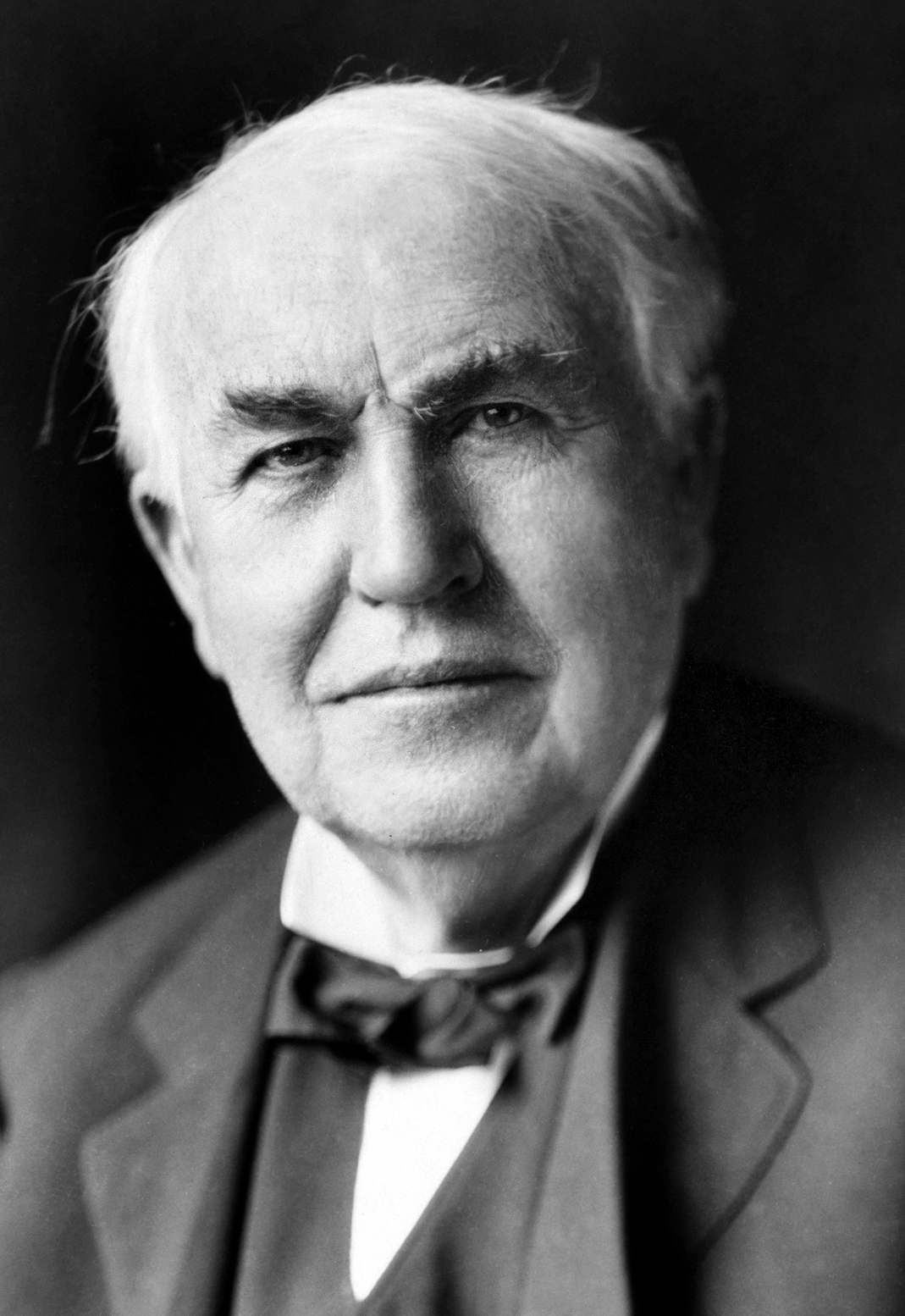| Thomas Edison sitting next to a phonograph Unknown author / Public domain via Pixabay |
There are many great people in the world, but my hero is Thomas Edison. He was one of the world’s greatest inventors. His inventions were very useful and many are still used today. In his life he had to overcome many challenges.
Thomas Edison was born on February 11, 1847 in Milan, Ohio. He was raised in Port Huron, Michigan. When Thomas Edison was young he developed a hearing problem and because of this he did not do well at school and was teased by the other kids. His mother eventually took him out of school and she taught him herself. Thomas Edison eventually began to teach himself. He was constantly studying and experimenting. When Thomas Edison was 13 he sold newspapers, and he also learned how to use a telegraph. When he was 16 he worked as a telegrapher full time.
 |
| Thomas Edison Louis Bachrach, Bachrach Studios, restored by Michel Vuijlsteke / Public domain via Wikimedia |
In 1869 he moved to New York City. There he made an improved stock ticker, which he called the Universal Stock Printer. It was his first successful invention. He made $40,000 from the Universal Stock Printer. In 1871 Edison moved to Newark, New Jersey. There, he used the $40,000 he made from the Universal Stock Printer to build his first laboratory. In Newark, he met Mary Stilwell and he married her. In 1876 Thomas Edison built a factory in Menlo Park, New Jersey. It was the first private research lab in the United States.
In 1877 Thomas Edison invented the phonograph. A phonograph is a machine that can record and play back sounds. When he was trying to improve the efficiency of a telegraph transmitter, he noted that the tape of the transmitter gave off a noise resembling speech when it was played at high speeds. This caused him to wonder if he could record a telephone message. He experimented with the diaphragm of a telephone receiver by attaching a needle to it. He thought that the needle would prick paper and record a message. He eventually used a stylus on a tinfoil cylinder. Using this, he successfully recorded and played back "Mary Had a Little Lamb." The phonograph made Thomas Edison famous. In April 1878, he was invited to the White House to demonstrate the phonograph to president Rutherford B. Hayes.
 |
| Young Thomas Edison J.M. White & Co. / Public domain via Pixabay |
In 1879 he made the first practical electric light bulb. He also invented a lighting system, which includes a parallel circuit, a durable light bulb, an improved dynamo, an underground conductor network, devices to maintain constant voltage, safety fuses, insulating materials, and light sockets with on-off switches. On September 4, 1882 Thomas Edison opened the first commercial power station. It provided electricity for homes within 1 square mile. It was built in Pearl Street in lower Manhattan.
Thomas Edison’s wife died in 1884. On February 1886 Thomas Edison married Mina Miller. He purchased an estate for them to live at in West Orange, New Jersey, and he lived there until he died.
He built a lab at West Orange, and it opened November 1887. It was designed to be the largest and best-equipped laboratory. It had 5 buildings. The main building was 3-stories tall and contained a power plant, machine shops, stock rooms, experimental rooms, and a library. There were also four 1-story buildings perpendicular to the main building. They contained a physics lab, a chemistry lab, a metallurgy lab, a pattern shop, and chemical storage. Thomas Edison worked at this lab until his death.
In 1889 Edison brought his electric companies together to form Edison General Electric. He never controlled this company. Edison General Electric merged with Thompson-Houston in 1892. When this happened, Edison General Electric became General Electric.
In his lab in West Orange, Thomas Edison invented a machine to record and play motion pictures. He began to commercially produce movies in 1893. In 1899, he began the development of an alkaline battery. He spent 10 years trying to make a practical battery. When finished, it became his most profitable product.
Thomas Edison died on October 18, 1931. In his life, he had 1,093 patents. He was once quoted as saying, “Genius is one percent inspiration and 99 percent perspiration."
Page created on 11/17/2004 12:00:00 AM
Last edited 8/26/2020 8:22:54 PM
"The Inventions of Thomas Edison." About. http://inventors.about.com/library/inventors/bledison.htm (07 Nov 2004)
"The Life of Thomas Edison." About. http://inventors.about.com/library/inventors/bledisonbiography.htm (07 Nov 2004)
"The Life of Thomas Edison Part 2." About. http://inventors.about.com/library/inventors/bledisonbiographyPart%202.htm (07 Nov 2004)
"The Wizard of Menlo Park." http://sln.fi.edu/franklin/inventor/edison.html (07 Nov 2004)
